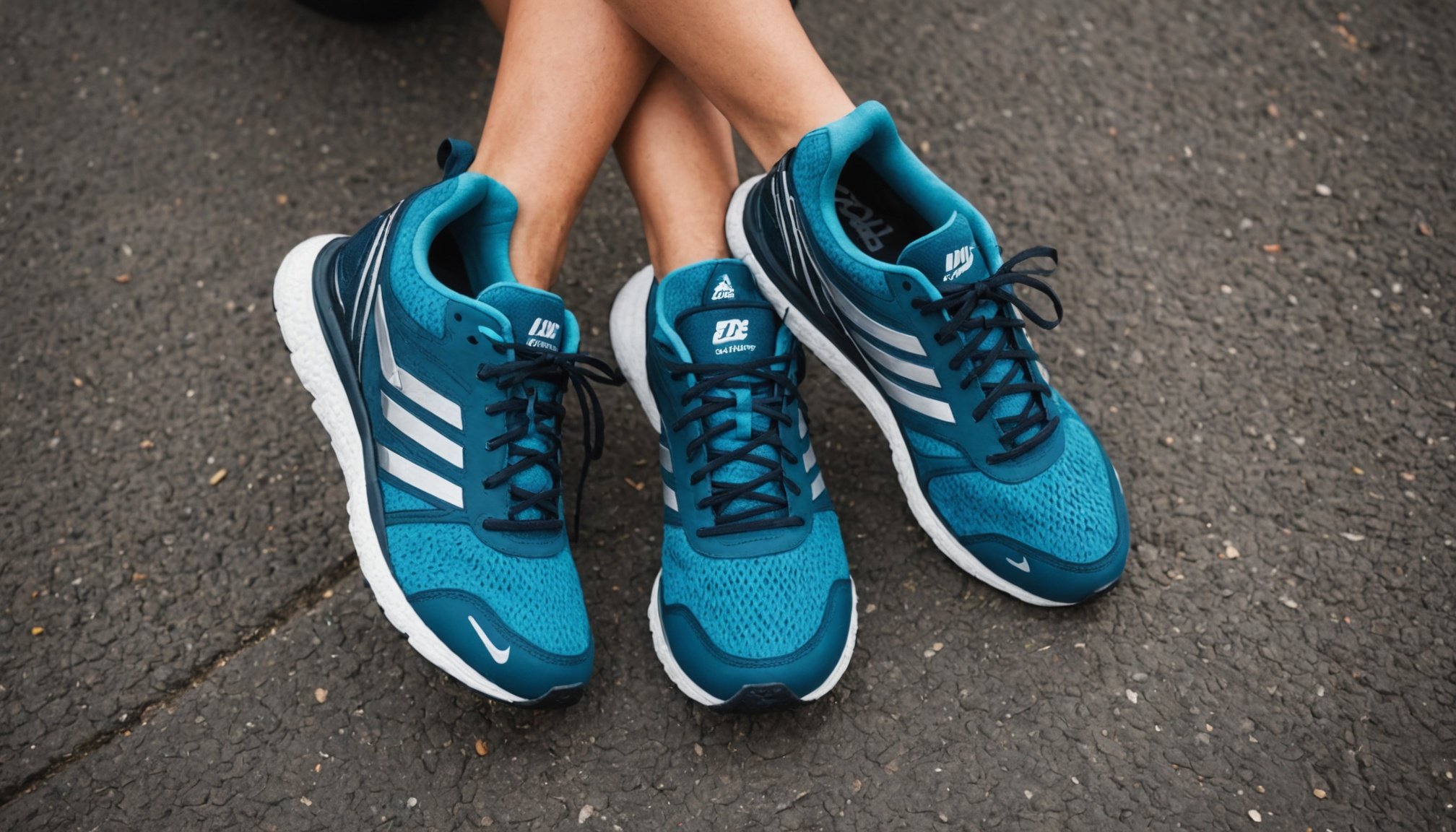Choosing the right running shoes is crucial for your overall performance and comfort. Whether you are a seasoned marathoner or a casual jogger, the right shoe can enhance your running experience, prevent injuries, and make every run feel enjoyable. This article will guide you through the essential factors to consider when selecting the perfect running shoes for your feet, ensuring that your next pair will not only fit well but also support your unique running style.
Understanding Your Foot Type
Before diving into the specifics of running shoes, it’s essential to understand your foot type. Everyone has a unique foot structure, and this can greatly influence your choice in running shoes. There are three primary foot types: neutral, pronated, and supinated.
Also read : How can understanding your body type help tailor your workout for optimal results?
Neutral feet have a balanced arch and typically offer good support. If your feet fall into this category, you might benefit from shoes that provide cushioning and support without excessive stability features.
Pronation refers to how your foot rolls inward when you run. If you notice that your toe tends to roll excessively inward, you might have a pronated foot. This requires shoes designed for stability or motion control to help stabilize your heel and prevent injury.
Also to see : How can you improve your agility and coordination through specific exercises?
On the other hand, if your foot rolls outward, you are likely supinated, which means you need shoes with extra cushioning to absorb shock and provide support.
Understanding your foot type helps you recognize what kind of support your feet need, which is the first step in finding the right running shoes. You can often have your feet analyzed at specialty running stores, ensuring the shoe you choose will fit comfortably and provide the right balance between support and cushioning.
Choosing the Right Size and Fit
The right size and fit are paramount when selecting running shoes. Ill-fitting shoes can result in discomfort and injuries, which is the last thing you want as a runner.
When trying on running shoes, make sure to wear the socks you typically use while running. Your feet tend to swell during exercise, so it’s crucial to try on shoes at the end of the day when your feet are at their largest. Leave about a thumb’s width of space between the end of your longest toe and the front of the shoe. This ensures that your toes have enough room to move and prevents them from hitting the front of the shoe during runs.
Consider the width of your foot as well. Some brands offer wider options, which can be especially beneficial if you have a wider foot or high arches. A shoe that is too narrow can lead to blisters and discomfort, while a shoe that is too wide can cause instability.
Additionally, pay attention to the overall feel of the shoe. The heel should fit snugly without slipping, and the midsole should provide adequate support without feeling overly stiff. Walk or jog around the store to gauge how the shoe feels during movement. Remember, the right fit will enhance your performance and make your runs more enjoyable.
Selecting the Appropriate Level of Cushioning
Cushioning is another critical factor that can greatly influence how your shoes feel while running. The level of cushioning you need may depend on several factors, including your running style, the surfaces you typically run on, and personal preference.
For those who run primarily on hard surfaces, such as pavement, a shoe with higher cushioning may be beneficial in absorbing the impact and reducing strain on your joints. These shoes can provide a softer feel and reduce the risk of injury.
Conversely, if you often run off-road or on softer surfaces, such as trails, you might prefer a shoe with less cushioning. Minimalist shoes can provide better ground feedback, allowing you to react more readily to changes in terrain.
Furthermore, consider your weight and running speed. Heavier runners may benefit from more cushioning than lighter runners, whereas speed-oriented runners often prefer a firmer ride for better control. Experimenting with different levels of cushioning can help you find what feels best for your feet. Ultimately, the ideal shoe should make you feel light, agile, and supported on every run.
Stability Features for Enhanced Support
Stability features in running shoes are essential for those who need extra support, particularly if you have flat arches or experience overpronation. These features help guide your foot through its natural motion cycle, preventing excessive rolling of the heel and toe.
When selecting a shoe, look for models specifically designed with stability technology. This may include firmer foam or a medial post that provides additional support on the inside of the shoe. This support helps maintain proper alignment, which is crucial for preventing injuries such as shin splints or plantar fasciitis.
In addition to stability, ensure the shoe provides adequate arch support. This is particularly important for runners with flat or high arches. Testing different shoes can help you determine which ones offer the best support for your specific needs.
Remember that stability does not mean compromising on comfort. The perfect running shoe should provide a balance of support and cushioning, ensuring that you feel comfortable and secure as you log your miles. By prioritizing stability alongside fit and cushioning, you can improve your running experience and reduce the risk of injury.
In conclusion, choosing the right running shoes for your feet requires careful consideration of your foot type, size, cushioning needs, and stability features. By understanding these elements, you can make an informed decision that will enhance your running experience. The perfect pair of shoes will not only fit well but will also support your unique running style, allowing you to enjoy each stride with confidence. Take the time to research and try on various options, and you will find a shoe that feels like a second skin on your feet. Happy running!
Finding the perfect pair of running shoes is more than just a quest for style—it’s an investment in your comfort and performance. For those who hit the track, pavement, or trail, the right footwear can make a profound difference. This article delves into the essential factors to consider when selecting running shoes that will provide the best fit and deliver the best support for your unique feet. By the end of this read, you’ll be well-equipped to choose running shoes that not only feel great but also enhance your running experience.
Understanding Your Foot Type
Before you embark on finding the perfect pair of running shoes, it’s crucial to understand your foot type. Feet can be categorized into three main types: neutral, overpronated, and supinated.
- Neutral Feet: Most people fall into this category, where the foot lands on the heel and rolls forward evenly. Neutral shoes offer minimal support and are often flexible.
- Overpronated Feet: Here, the foot rolls inward excessively. Those with flat feet often fall into this category, requiring shoes with added stability and support to counterbalance the inward roll.
- Supinated Feet: In this case, the foot rolls outward. Runners with high arches usually have supinated feet, needing shoes that offer substantial cushioning and flexibility.
To determine your foot type, perform a simple wet foot test: Wet your foot and step onto a piece of paper. Analyze the imprint to understand how your foot makes contact with the ground. Armed with this knowledge, you can select a shoe that complements your foot’s natural alignment and motion.
The Importance of Shoe Fit
Fit is a critical factor in selecting the right running shoe. An ill-fitting shoe can lead to discomfort, blisters, or even injury. Here’s what you need to know:
- Size: When trying on shoes, ensure there’s about a thumb’s width of space between your longest toe and the end of the shoe. Your feet swell during runs, so extra room prevents toe jamming.
- Width: A shoe that’s too tight in terms of width can cause blisters, while one that’s too wide may lead to instability. Aim for a fit that allows your feet to move naturally, without excessive slipping.
- Arch Support: The arch of your foot needs adequate support, regardless of whether it’s high, low, or neutral. Shoes with the right arch support help prevent fatigue and maintain balance.
The right fit should feel comfortable from the moment you put it on. It’s advisable to try shoes on later in the day when your feet are naturally more swollen, simulating running conditions.
Choosing the Right Cushioning and Stability
Cushioning and stability are key components of a running shoe, impacting how your feet feel during your run. Here’s what to consider:
- Cushioning: Look for shoes with cushioning that suits your running style and terrain. If you run long distances, shoes with extra cushioning can absorb shock, reducing the impact on your joints.
- Stability: Depending on your foot type, stability shoes with firmer materials can prevent excessive rolling, particularly for overpronators. These shoes often feature built-in support such as medial posts.
When testing a shoe, consider how it feels when walking or running. Does the arch support feel adequate? Does the cushioning absorb impact well? A good shoe will provide a balance of comfort and support, allowing for a more efficient and enjoyable run.
Consider Your Running Environment
The environment where you run plays a significant role in determining the type of shoe needed. Different terrains demand different features:
- Road Running: For asphalt or concrete surfaces, look for shoes with ample cushioning and a durable outsole to withstand repetitive impact.
- Trail Running: If you’re a trail enthusiast, opt for shoes with enhanced grip, waterproofing, and durability to handle uneven surfaces and weather conditions.
- Track Running: Shoes designed for tracks often have a lightweight build, with sufficient traction for quick, agile movements.
Selecting a shoe that matches your environment ensures your feet are supported and protected, regardless of the terrain. Moreover, it contributes to prolonged shoe durability, allowing you to focus on achieving your personal best.
Choosing the right running shoes is a nuanced process that requires a careful assessment of your foot type, the shoe’s fit, cushioning, stability, and the environments you frequent. By understanding these elements, you empower yourself to make informed decisions, ensuring that your shoes will provide the best support and allow your feet to perform at their peak. Armed with this knowledge, step into your next run with confidence, knowing you’ve made a choice that champions both comfort and performance.











